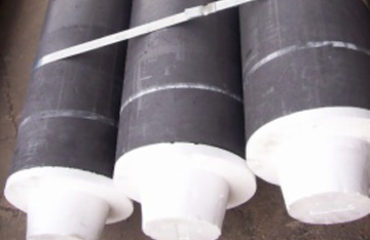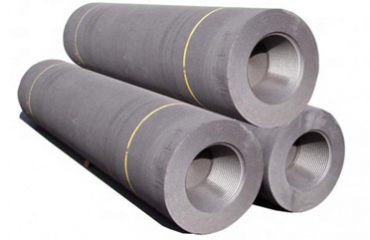Everyone knows graphite anode plate, but do you know the rule of graphite plate graphitizing furnace in the process of electrification? Many people don’t know. Today, we have the following information, let’s take a look at it.
The voltage, current, power and power factor of graphite plate graphitization furnace are in a constant state of change after electrification, which is interrelated and causal. When starting power on, the appropriate starting power and rising power should be selected according to the size of the furnace and the specifications of the charging products. Power is the product of the output voltage and the corresponding current value of the transformer’s low-voltage side and the power factor of the power supply system at that time (that is, P = EIcos ^>).
Because the resistance of the furnace core is relatively high in the initial stage, it must be supplied with a certain voltage value so that the furnace core can pass through a proper amount of current. Therefore, if the starting power is required to be higher, the voltage level of starting power supply is also higher (> specification product is this case, after a period of electrification, the temperature of the furnace core rises continuously, and the resistance of the furnace core decreases gradually. When the voltage is unchanged, the passing current increases automatically, and the power increases (the power factor changes less in the dozens of hours after the start of power-on). This kind of automatic rise of current and power is slow and limited.
In order to increase the power of the furnace according to the specified rising power, the output voltage of the transformer should be adjusted frequently, that is, the graphite plate graphitization process should be gradually connected to a higher voltage level until the highest power point, which should make full use of the rated capacity of the transformer. When the power on reaches the highest point, the current does not reach the maximum rated current value of the transformer, and the current through the furnace core can continue to increase when the resistance of the furnace core decreases continuously. In order not to overload the transformer, it is necessary to reduce the voltage in time so that the current does not exceed the transformer’s limit capacity.
When two transformers of the same specifications are connected in series or in parallel (or two secondary coils of a transformer can be connected in series or in parallel), the higher starting voltage needed in the initial stage can be supplied in series, but when the transformer’s limit capacity is reached, it should be changed to parallel power supply immediately. At this time, due to the reduction of voltage, it will be introduced into the furnace. The internal current and power both decreased temporarily, and then continued to rise.
Therefore, there will be two power peaks in the whole process of power-on. Although the first peak power is very high, the voltage of the transformer is very high and the rated current is not very large because of the restriction of series transmission. When the transformer is changed to parallel transmission, the voltage decreases, but the current can be greatly increased.
In the later period of power-on, it is no longer necessary to adjust the power-on according to the rise of power. At this time, the main purpose is to make the current reach the maximum allowable value of transformer and make it stable at a higher level. When the heated furnace starts to reach the maximum power, the core is far from the maximum temperature, and only when the current through the core reaches the maximum point, can it approach the maximum temperature stage. At this time, the power can not be cut off immediately, because the furnace temperature is still in an unbalanced state when the current reaches its maximum, so the furnace temperature can continue to rise.



